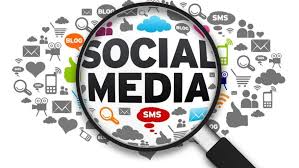Using Meme Culture To Engage Young Voters: A Case Study On Indian Politics

In recent years, social media has become a crucial battleground for global political campaigns, and India is no exception. With over 600 million internet users, the country’s rapidly growing digital ecosystem presents both a challenge and an opportunity for political parties seeking to engage voters, particularly the youth. One of the most innovative and impactful strategies that have emerged in this digital age is meme culture. Memes, once seen as a form of lighthearted internet humor, have now become a powerful tool for political communication, especially in engaging the younger demographic.
In this article, we explore how political campaigns in India have effectively used meme culture to capture the attention of young voters, build brand identity, and influence election outcomes. Through a case study of the 2019 Indian General Elections, we examine the role of memes in shaping political discourse and driving voter participation among India’s tech-savvy youth.
The Rise of Meme Culture in India
Meme culture has become an intrinsic part of digital communication in India. Memes, which often blend humor, satire, and visual creativity, are easily shareable and accessible across social media platforms like Facebook, Instagram, Twitter, and TikTok. Young people in India, particularly those between the ages of 18 and 30, are prolific meme creators and consumers. They use memes not just for entertainment but also to express their political opinions, challenge authority, and discuss current events.
For political parties, understanding and tapping into this meme culture is essential for connecting with this younger electorate. Rather than relying on traditional, formal campaign strategies, memes allow for a more relatable and casual way to communicate political ideas. They are instantly recognizable, often humorous, and, most importantly, shareable. This makes memes an ideal vehicle for rapidly spreading political messages across social networks, which is particularly important in a country like India, where political discourse often occurs on digital platforms.
Case Study: The 2019 Indian General Elections
The 2019 General Elections in India marked a significant shift in how political campaigns used social media to engage voters. The Bharatiya Janata Party (BJP), led by Prime Minister Narendra Modi, was particularly adept at leveraging memes to connect with young voters. The party understood that memes weren’t just jokes; they were a form of expression that could influence public opinion and shape the narrative surrounding the elections.
One key element of the BJP’s 2019 campaign was its heavy reliance on digital media. The BJP’s social media presence was robust, with a dedicated team managing its online image and creating content that resonated with India’s youth. This included developing and circulating memes that humorously depicted the party’s political rivals, celebrated Modi’s leadership, or highlighted the party’s achievements.
For example, Modi’s catchphrase “Ab ki baar, Modi sarkar” (This time, Modi government) was turned into a viral meme spread across social media platforms. Supporters and meme creators played with the phrase, remixing it into various humorous contexts and formats. The meme was adapted to fit a variety of situations, ranging from memes about Modi’s achievements to those mocking the opposition. This helped keep the slogan alive in public conversation and generated continuous buzz around the BJP’s campaign.
Similarly, the BJP’s social media team capitalized on the meme potential of Narendra Modi’s public image. Modi’s humorous gestures, facial expressions, and iconic photos were turned into memes that depicted him as a strong, decisive leader. These memes portrayed Modi as a leader who could tackle challenges head-on, further enhancing his image as a no-nonsense leader capable of bringing change. At the same time, memes portraying the opposition in an unflattering light—such as Rahul Gandhi’s perceived gaffes and awkward moments—were widely circulated, further cementing Modi’s stature as a competent and popular leader.
Why Memes Work: Relatability and Shareability?
The success of memes in the 2019 election campaign can be attributed to several factors, the most important of which is their relatability. Young voters in India are often skeptical of traditional forms of political communication, viewing them as formal, scripted, and disconnected from their daily lives. Memes, however, are inherently informal, funny, and often irreverent. They speak in a language that young people understand, using humor to comment on political events in ways that are easy to digest and hard to ignore.
For instance, during the election campaign, memes were created that poked fun at the Indian political elite, often in a lighthearted but pointed manner. These memes frequently used pop culture references, current events, and humorous exaggerations to highlight the absurdities in politics. This satirical approach resonated with young people disillusioned with the political system or feeling that politicians took themselves too seriously.
Moreover, memes are inherently shareable. When a meme is funny, relatable, or thought-provoking, users are likely to share it with their networks. This creates a viral effect that spreads the meme far beyond its original audience, extending its reach across social media platforms. In a country as vast as India, where social media platforms serve as a primary source of information and entertainment, the viral nature of memes ensures that political messages have the potential to reach millions of young voters.
The Opposition’s Response: Memes and Counter-Memes
The 2019 elections were marked by intense back-and-forth between political parties, particularly on social media platforms. While the BJP was quick to embrace meme culture, the opposition parties, such as the Indian National Congress (INC) and the Aam Aadmi Party (AAP), were not far behind. These parties also tapped into memes’ potential to engage young voters, though their approaches differed.
For the INC, Rahul Gandhi became the focal point of many memes during the 2019 elections. His public speeches, awkward moments, and viral gaffes were frequently turned into memes, often exaggerating his perceived lack of political experience. While these memes were usually humorous, they also served to shape public perception of Gandhi, particularly among younger voters who were more likely to engage with such content.
